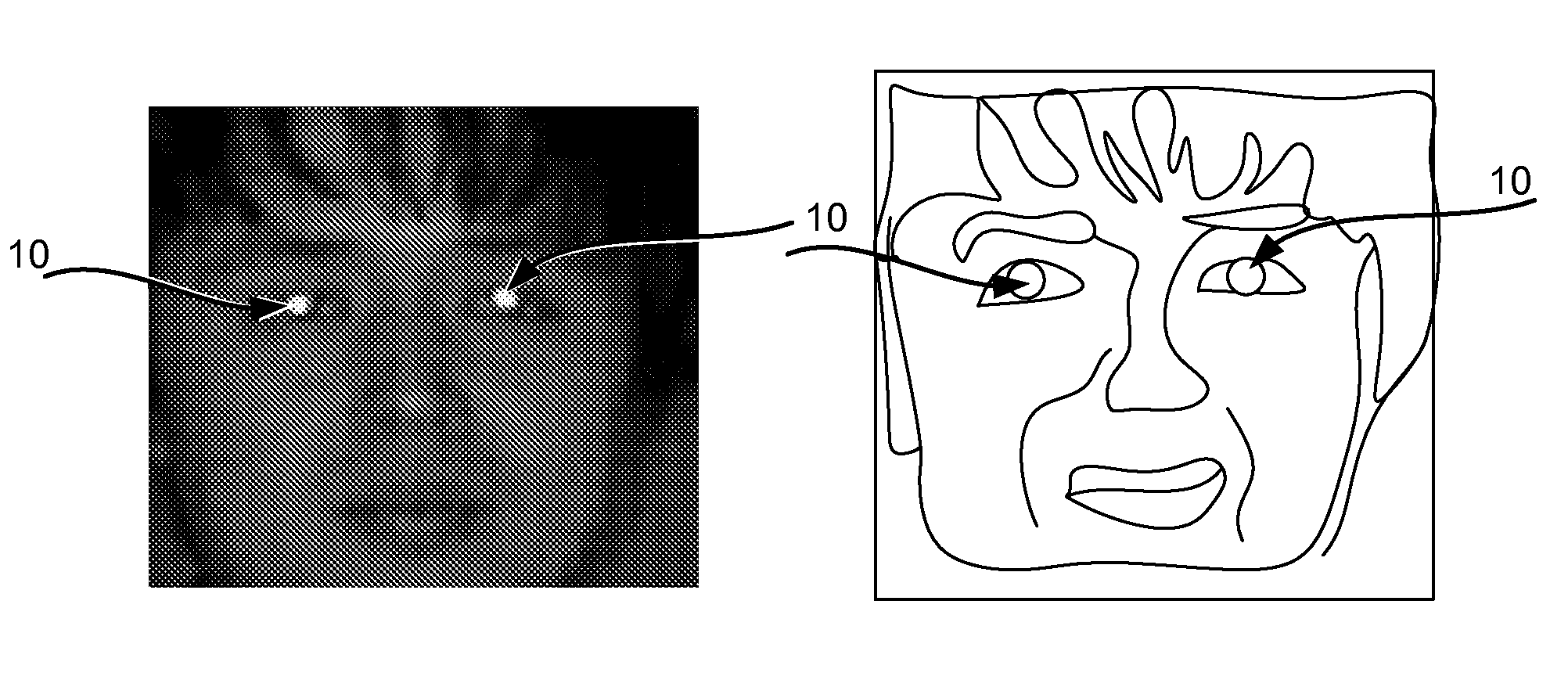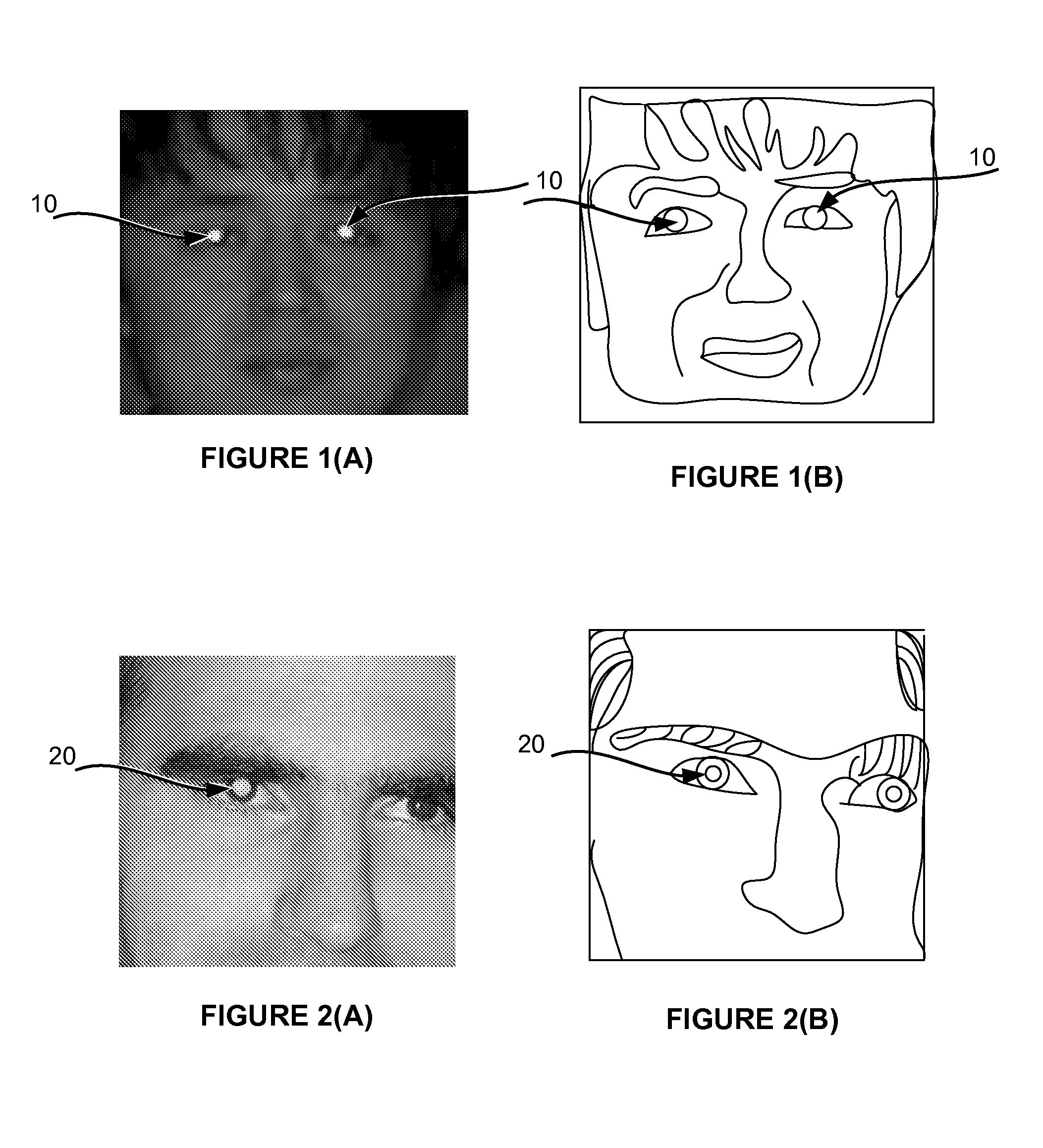Automatic detection and correction of non-red eye flash defects
a technology of automatic detection and correction, applied in image data processing, instruments, character and pattern recognition, etc., can solve the problems of poor information in the neighborhood about other facial features and therefore unreliabl
- Summary
- Abstract
- Description
- Claims
- Application Information
AI Technical Summary
Problems solved by technology
Method used
Image
Examples
Embodiment Construction
[0037]A method is provided for automatic detection and correction of small white eyes. A flowchart illustrating one embodiment is shown in FIG. 3. In this embodiment, an eye defect is said to be white or golden if it is bright, for example, in Lab color space the local average luminance I is higher than 100, and is not too saturated, for example, in Lab color space, the absolute value of a and b parameters does not exceed 15.
[0038]Initially, the luminance of each pixel of an acquired image 250 to be corrected is determined and a selection of all the pixels whose luminance is larger than a threshold value is made, 300. In the preferred embodiment, the acquired image is in RGB space and the intensity is calculated as I=max[R,G] and the intensity threshold value is 220. Also, to avoid highly-saturated colors (such as pure red or pure green) the saturation computed as abs(R−G) is compared to a threshold of 35, and discarded if higher. As such, only high-luminance pixels are retained, wh...
PUM
 Login to View More
Login to View More Abstract
Description
Claims
Application Information
 Login to View More
Login to View More - R&D
- Intellectual Property
- Life Sciences
- Materials
- Tech Scout
- Unparalleled Data Quality
- Higher Quality Content
- 60% Fewer Hallucinations
Browse by: Latest US Patents, China's latest patents, Technical Efficacy Thesaurus, Application Domain, Technology Topic, Popular Technical Reports.
© 2025 PatSnap. All rights reserved.Legal|Privacy policy|Modern Slavery Act Transparency Statement|Sitemap|About US| Contact US: help@patsnap.com



